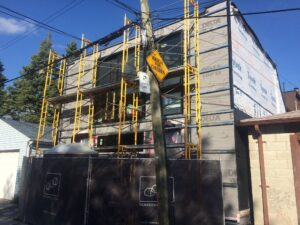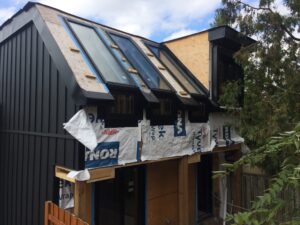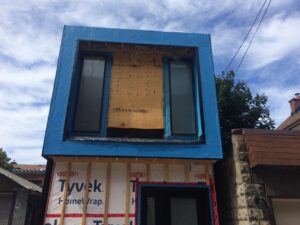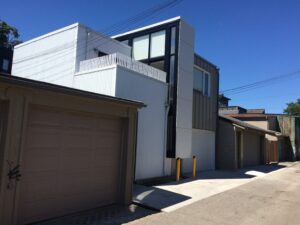Last week was a particularly busy week for new MLS listings in Toronto proper.
And among the 2,500+ brand new listings coming onto the market last week, lay just about 56 properties that are indeed very special.

Because these properties likely qualify for a laneway house build.
Yes, out of over 2,500 properties listed for sale in Toronto just last week alone, only about 56 qualify to build a free-standing, self-contained laneway house, right in the back yard.
That’s rare.
BUT, when we take a close look at each of these 56 special listings, we see an issue. In the property description, very, very few of them even mention the laneway house opportunity, if only in passing. In fact, only four of them do. 52 listings do not even mention the laneway house possibility.
Why is that information left out? And how much money might that be costing the sellers of these properties?
We’re pretty sure we know the “why”. And it’s fairly straightforward.

The awareness level is still not very high. Even though the new laneway house regulations have been in place since 2018, there are still not too many built. The last time we checked, there were under 100 building permits issued.
So we believe that when we get closer to a critical mass, say one new laneway house in every one of the 2,400+ Toronto laneways, we will see an uptick in both awareness and demand.
Now, the amount of money that sellers are leaving behind is still a bit murky.
But consider this:
- The land the laneway house is built on is not purchased separately, it’s “included” with the main house when it is bought and sold. And even the largest laneway house only takes up about 860 square feet of the property (the maximum size is about 26 feet wide by 33 feet deep). Laneway house builds are exempt from development cost charges (it’s actually a somewhat complicated deferral program, but in the end the fee is waived completely), so that’s a $70,000 saving over other residential builds.
- The laneway house can have a wide variety of uses and configurations – zero, 1, or 2-car garages, basements in some cases, and each floor of living space can be designed exactly how you like. There are examples of 1, 2 and 3-bedroom units, with one or two bathrooms. Some are being used as revenue (rental) units, while even more or being used for family and friends – kids and parents, and guests. A few more are even studios, home offices or even recreational space away from the main house.
Now, how do we put a value on that 26’x33′ piece of property?
Well, consider that that piece of land can house a 1722 square foot, 2-storey laneway house. How much would you pay for a piece of property that size, south of Dupont (where 80% of the laneways are located)? You’d be unlikely to find it for less than $500,000.

How much would you pay for a 1722 square foot condo? Certainly over $1 million.
So, finding no reasonable comparables, why don’t we set the value of this piece of land at, say, $200,000. So if we say the land is worth $200,000 and we already know we can build a very nice 1722 square foot laneway house on that land for under $500,000 in soft and hard construction costs, the two together is about $750,000.
Would you say a brand new, custom designed, 1722 square foot laneway house on it’s own bit of land is worth $750,000? We’d say it’s worth at least that much.
So that brings us back around to the title of this piece: Did Toronto laneway house property sellers leave $10 million behind last week?

If we give some credence to the above figures, and particularly valuing the piece of land the laneway house is built on at $200,000, why did 52 of last week’s new Toronto real estate listings not even mention the laneway house possibility?
If we take 52 listings, and multiply by $200,000 each, we have more than $10 million dollars in value potentially left behind by sellers.
Let’s see what happens this week.
~ M.

